Homemade rye bread, a very easy recipe to make step by step

Homemade rye bread, more typical of northern Europe, was characterized by being dense, dark breads, with little gluten and with an intense flavor. Although today rye bread has become widespread and is greatly appreciated, it was once considered a poor man’s bread. We can find countless recipes for rye bread, either with 100% rye flour or with mixtures of flour, spices or other ingredients. Our rye bread has a 73% rye flour and the rest bread flour.
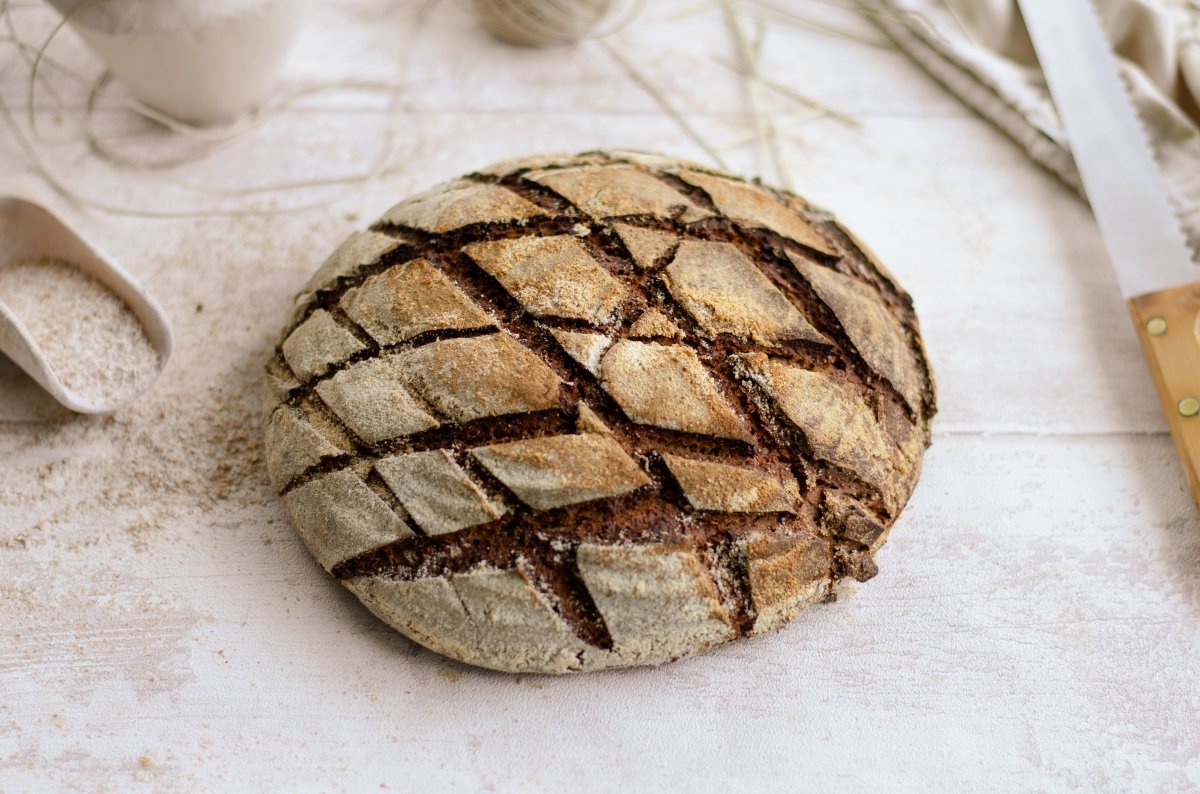
recipe information
-
- Preparation time: 20 minutes
-
- cooking time: 45 minutes
-
- total time: 1 hour and 5 minutes (plus about 6 hours of fermentation)
-
- rations: 15, 1550g
-
- Category: loaves
-
- type of cuisine: european
-
- Calories per serving (kcal):169
Ingredients for rye bread for 15 people
For the ferment:
-
- 6 g fresh yeast
-
- 150 g cold water
-
- 150 g white rye flour
For the final dough:
-
- 400 g white rye flour
-
- 200 g of bread wheat flour
-
- 305 g of ferment
-
- 350g of water
-
- 1 g fresh yeast
-
- 15g of salt
-
- 1 handful of rice flour (optional for the bannetón)
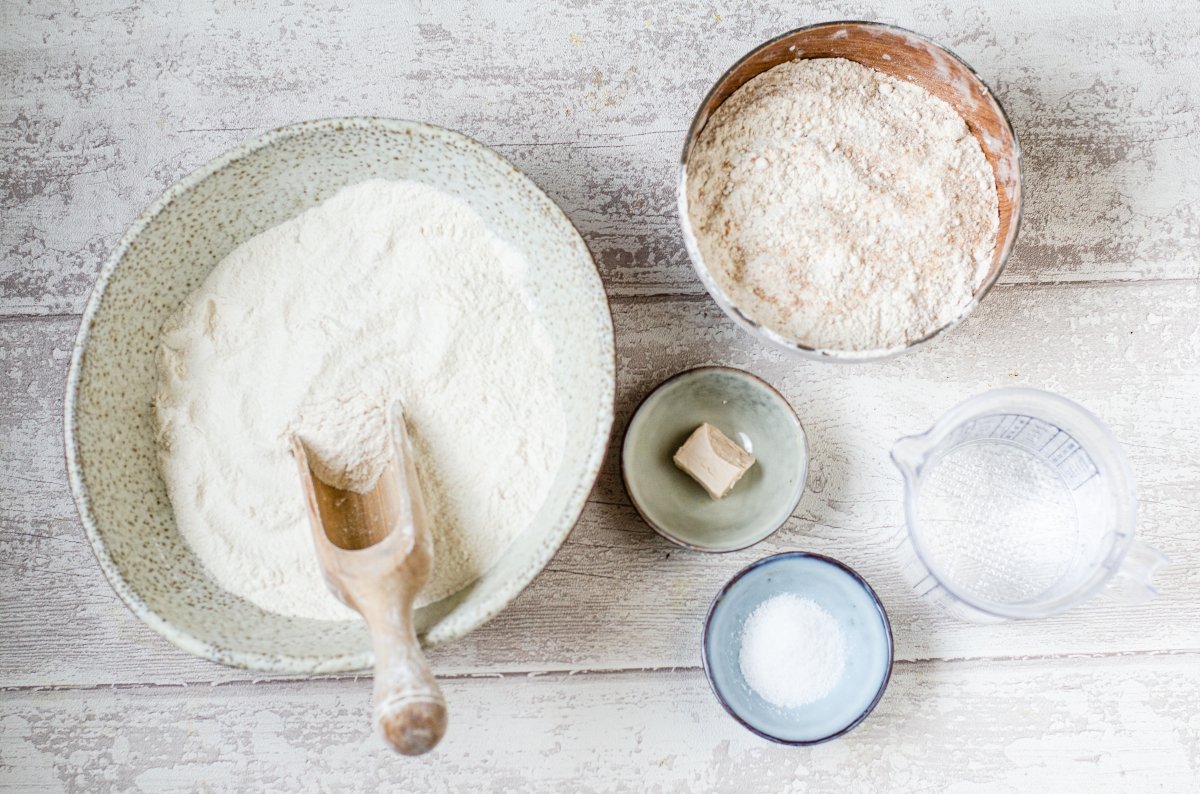
How to make rye bread
We start the recipe by preparing the ferment about 4 hours before kneading the bread. To do this, in a bowl we put 6 g of fresh yeast, add 150 g of cold water and mix everything until the yeast is dissolved. Next, we add 150 g of white rye flour and with a wooden spoon, mix well until everything is integrated. Cover it and let it ferment at room temperature for about 3 hours.

After the fermentation time, we will see that the ferment will have doubled in size and will be bubbly and ready to use in our rye bread.
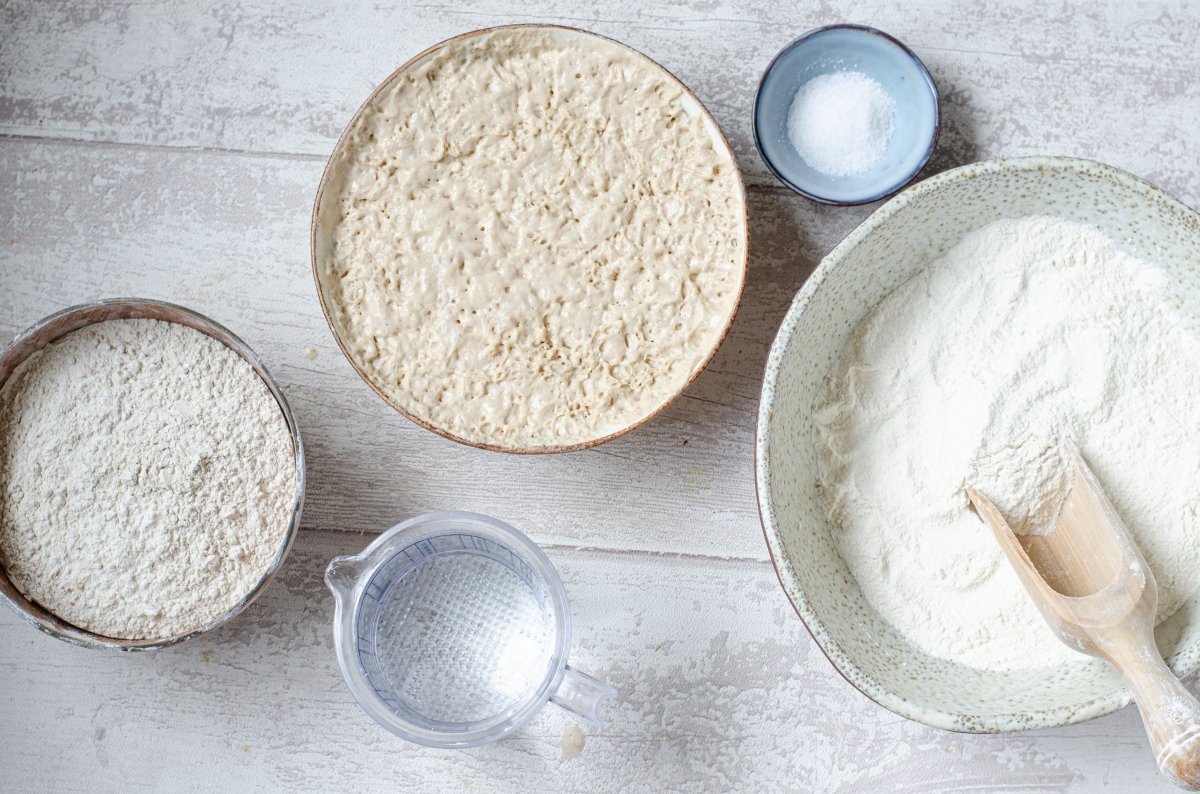
Let’s go with the dough for our rye bread; In a bowl we put 400 g of white rye flour, 200 g of bread flour and 305 g of ferment.
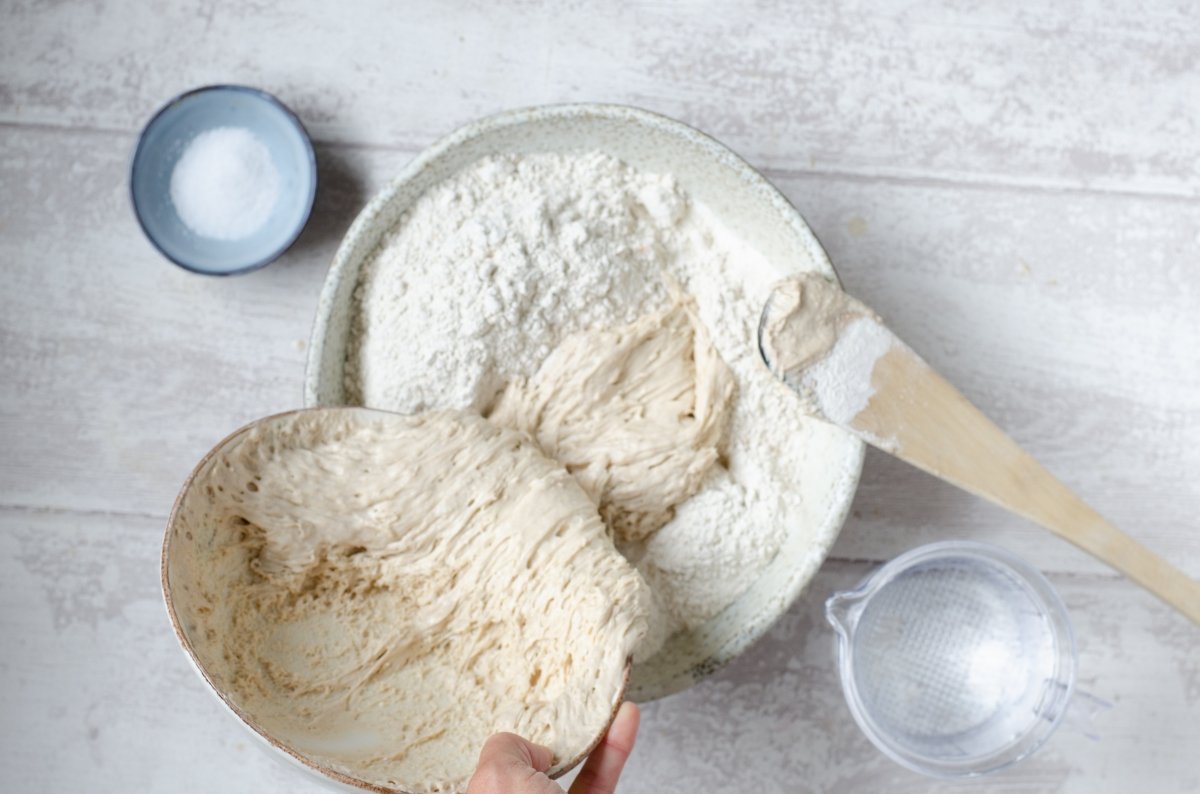
Add 330 g of water and 1 gram of fresh yeast. We mix everything well until we stop seeing flour and it is all integrated. At this time, we let the dough rest for about 20 minutes as an autolysis.
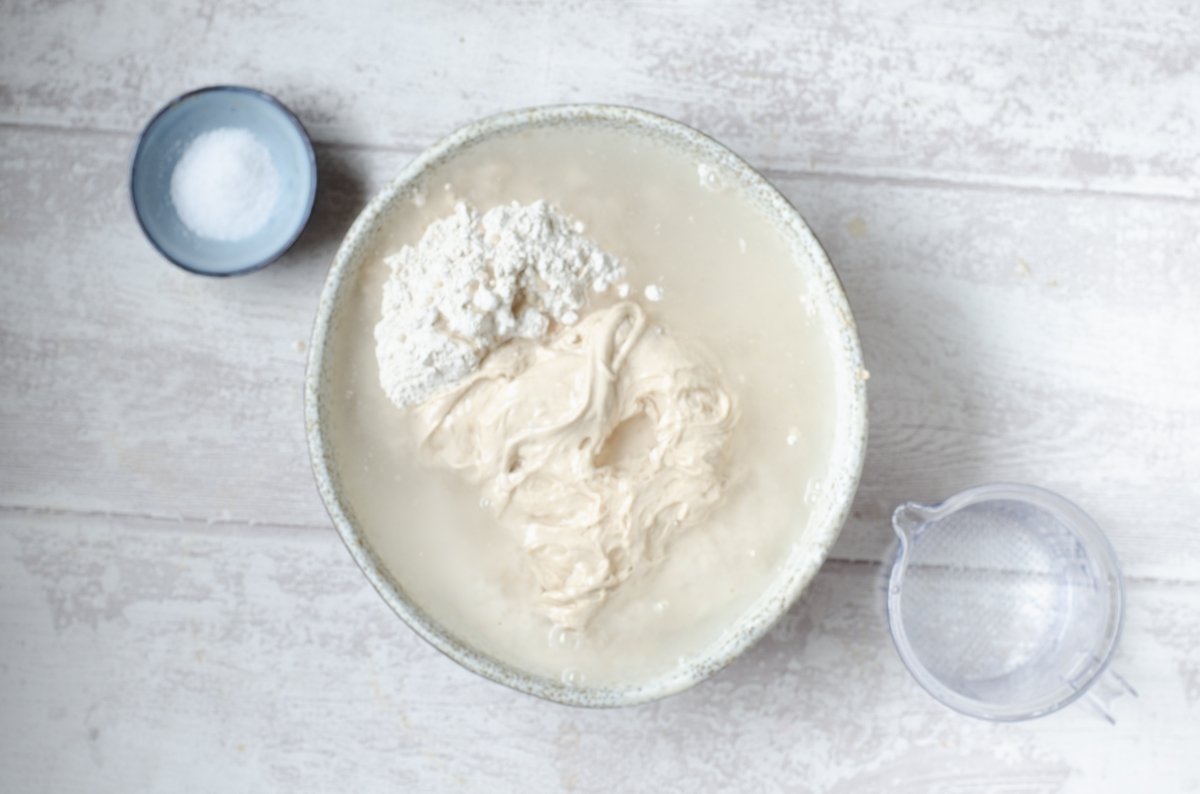
After the rest time, add 15 g of salt with 20 more g of water and knead. We can knead manually or in a mixer. If we see that the dough is very dense, we add a little more water. We cannot indicate an exact amount of water as it will vary depending on the type of flour used. What we are looking for is a mass that looks similar to the one in the photograph.
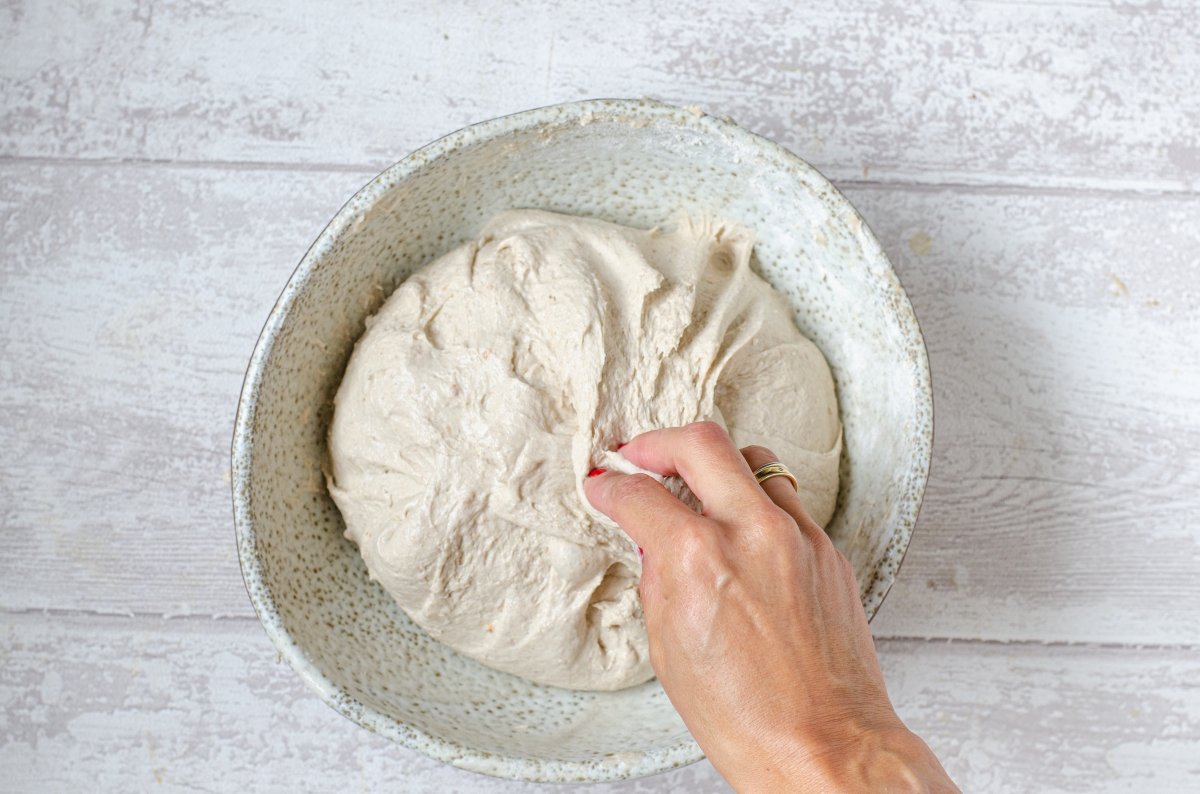
Once the dough is integrated, we transfer it to a large container with a lid —or leave it in the same bowl, whichever is more comfortable for you— previously oiled and we fold it two or three times during the first half hour of fermentation. We will have a dense dough with little gluten, but it is normal with rye breads. Cover and let rise at room temperature until doubled in size. At this point, we can put the dough in the fridge to slow down the fermentation and distribute the making of the bread over several days. Once the dough has doubled in volume, which can take 1 hour and a half or 2 hours, we form our bread.
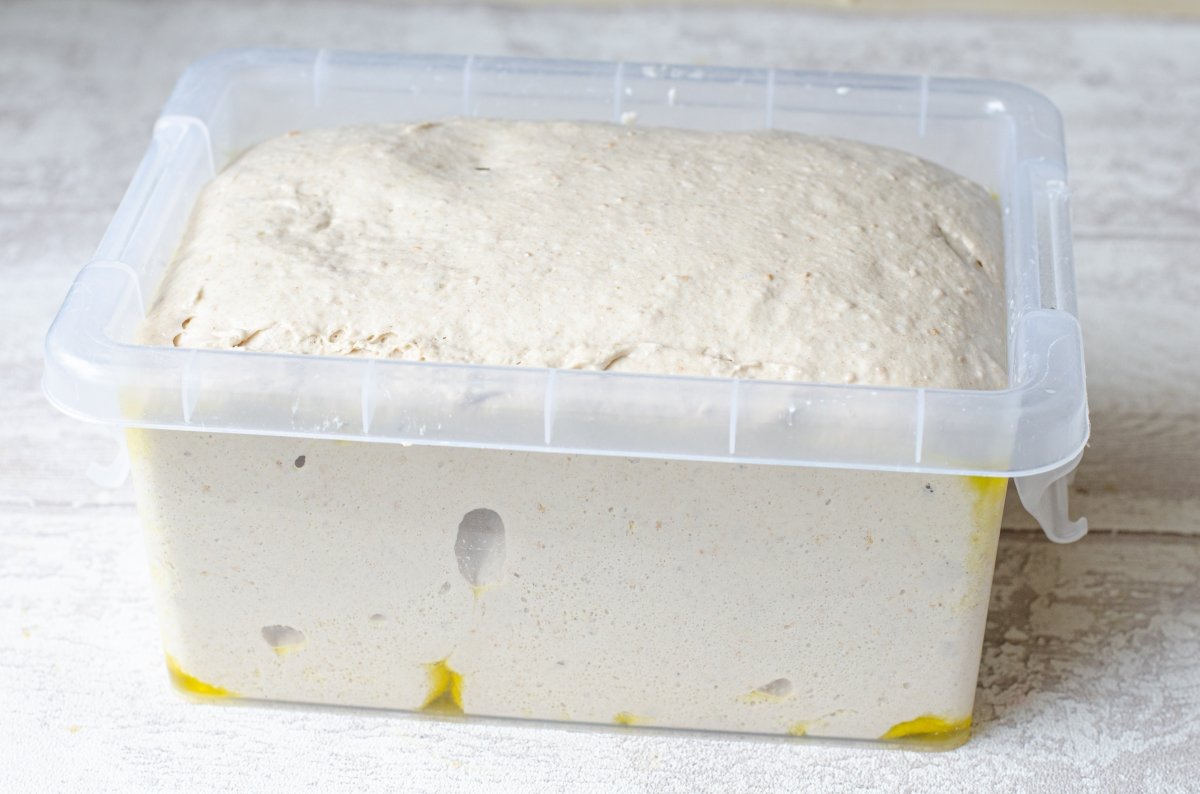
We turn the dough on the work surface and round it, generating a little tension. That is to say, we are giving it the shape of a ball, stretching the dough a little towards the base with both hands, so that it is stressed and not a dough that tends to squash. Let it rest like this for about 15 minutes. Meanwhile, we prepare the fermentation basket or bannetón. If we do not have specific baskets, we can use a bread basket or a bowl. Dust the bowl with flour so the dough doesn’t stick. If we have, rice flour is ideal for this. Otherwise, we use the flour we have.
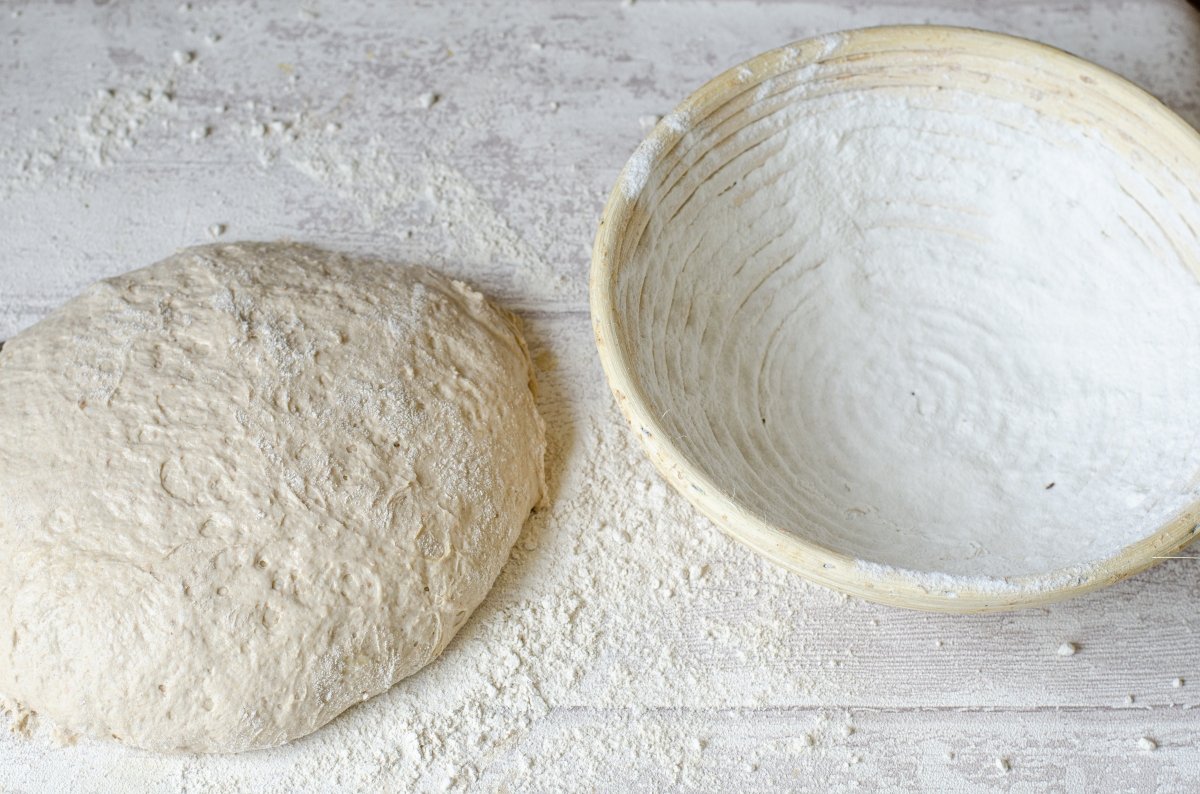
We form the bread; to do this, we make a ball and transfer it to the fermentation basket with the folds facing up. Dust it with flour and cover it. Let it ferment at room temperature for 1 hour.
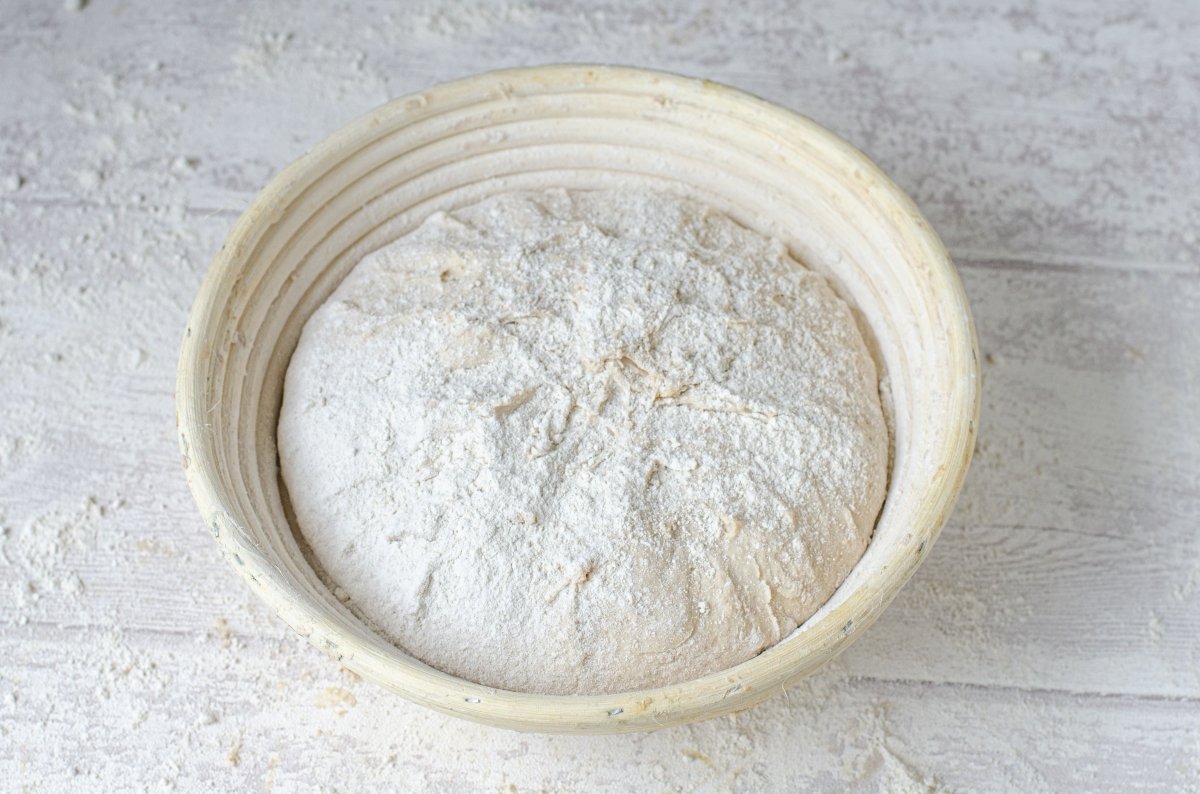
After the first hour, we turn on the oven at 250 °C so that it heats up to bake the bread. Once the bread has risen and the oven is hot, we turn the risen bread, with the folds down, on a tray lined with baking paper.
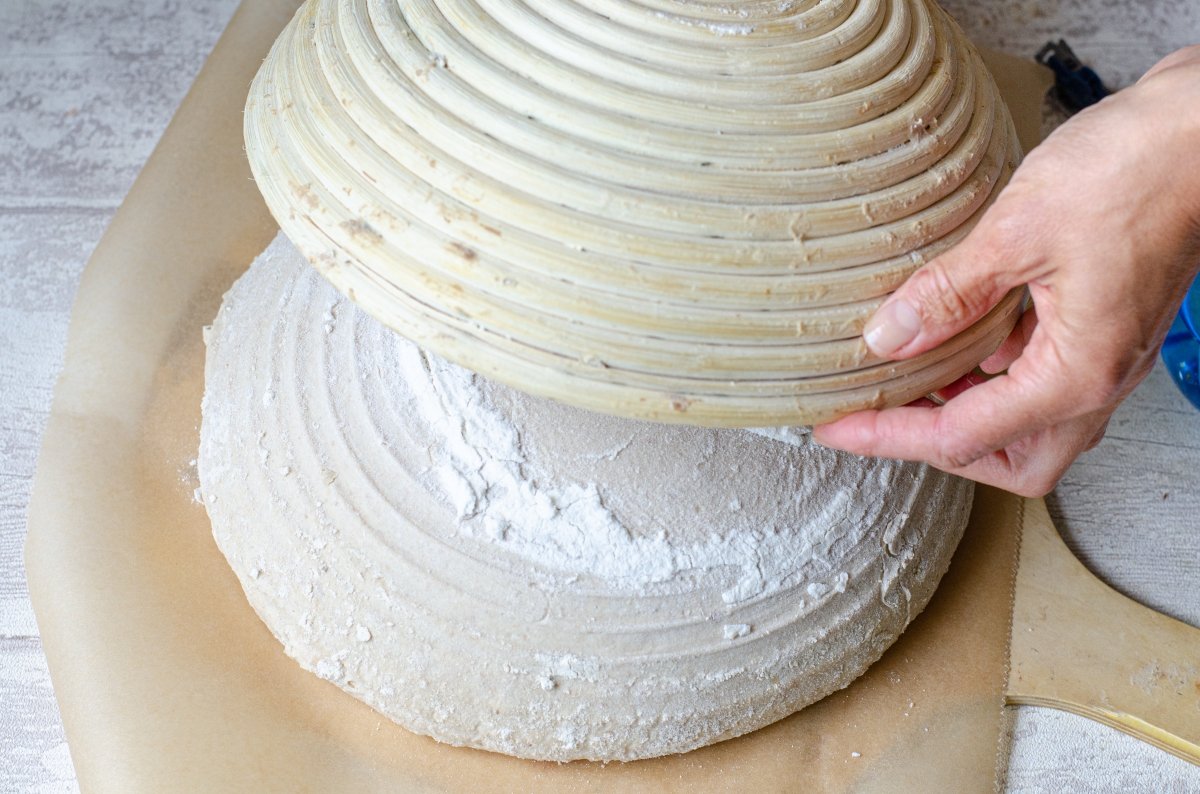
Sprinkle it with flour and weave it, that is, with a blade we make some cuts so that the bread opens there during baking. In our case, we will give it some square-shaped cuts, something simple and showy. Next, we spray the bread with a little water. Finally, we put it in the oven at 250 °C for the first 15 minutes and then lower it to 230 °C for another 30 minutes. After this time, we lower the oven back to 220 ºC and bake the bread for 10 more minutes. In total, 55 minutes of baking.
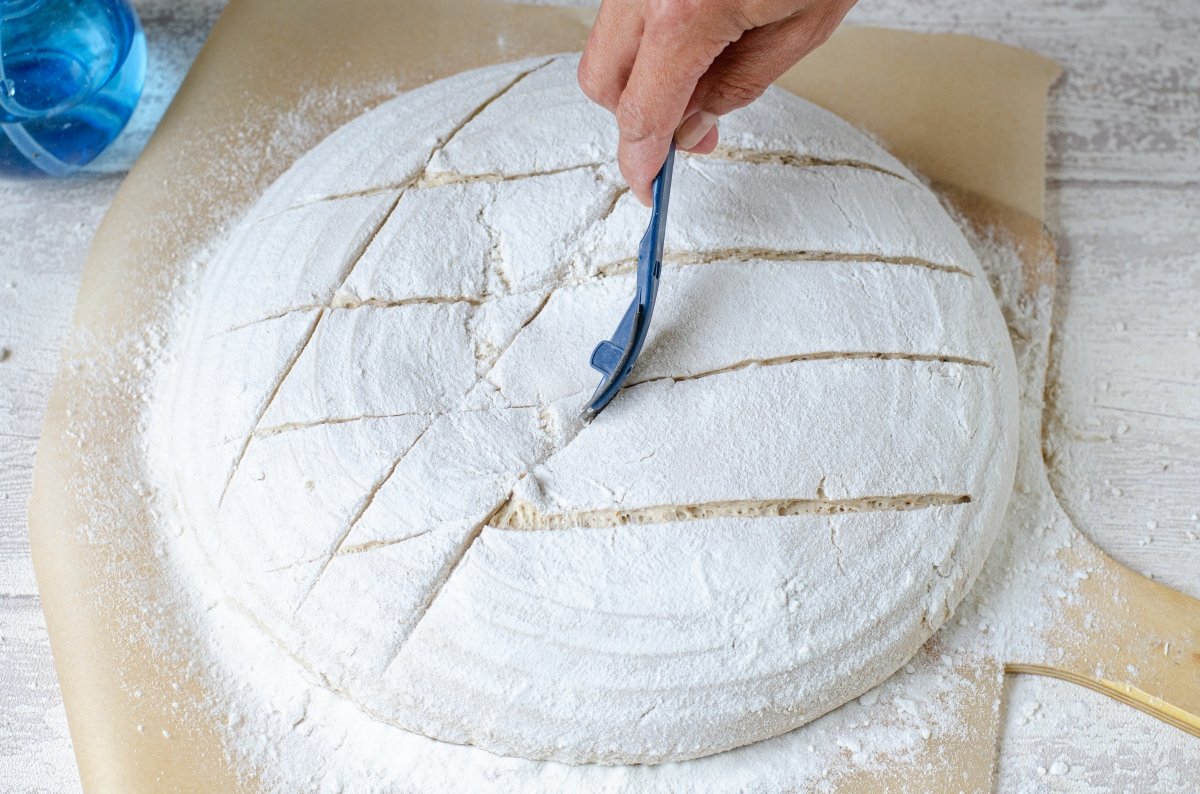
Remove the bread from the oven and let it cool on a rack until the next day, before cutting it. Rye breads, and such dense breads in general, need time to rest before slicing to allow their flavor to settle and intensify.
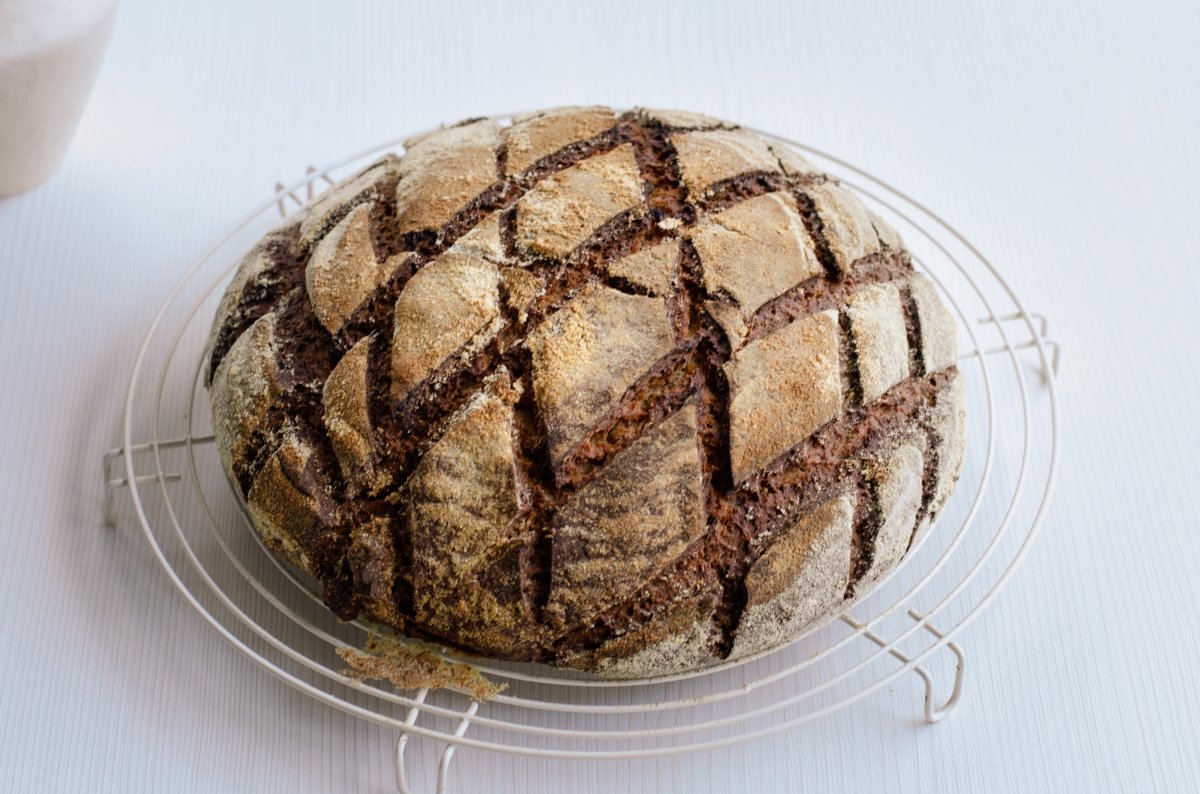
Once the bread has rested, we cut it into slices to enjoy it. A wonderful option to keep it for a longer time is to freeze it already cut into slices, which we will remove and toast at the time of consumption.

Easy preparation summary
-
- We start by making the ferment; dissolve the yeast in the water and add the flour, mix and let it ferment covered for about 4 hours
-
- When the ferment is bubbly we prepare everything to make the dough
-
- Mix the flours with the ferment in a bowl
-
- Add the water —reserve a little— the yeast, mix and let it rest for 20 minutes as an autolysis
-
- Add the salt with the remaining water and knead until you get a smooth and integrated dough.
-
- We transfer the dough to a large container and fold it several times, cover it and let it rise for 1 or 1 hours until it doubles its volume.
-
- Turn the dough over, round it and let it rest for 15 minutes and while we sprinkle flour in the fermentation basket
-
- Round the dough again to give it shape and place it in the basket with the folds facing up.
-
- Preheat the oven to 250 °C and, once hot, place the risen bread on a baking tray
-
- Grease the bread, spray it with water and bake it for a total of 55 minutes, regulating the temperature
-
- Remove the bread from the oven and let it cool on a wire rack until the next day.
-
- We cut it and enjoy our rye bread, dense and full of flavor as we like.















Welcome to Sweet Eats Cakes
Where delectable dreams come to life in the form of exquisite confections! Sweet Eats Cakes isn't just about taste; it's about turning moments into memories. Our cakes are crafted with precision, attention to detail, and a sprinkle of magic to ensure that each slice is not just a treat for the taste buds but a feast for the eyes!